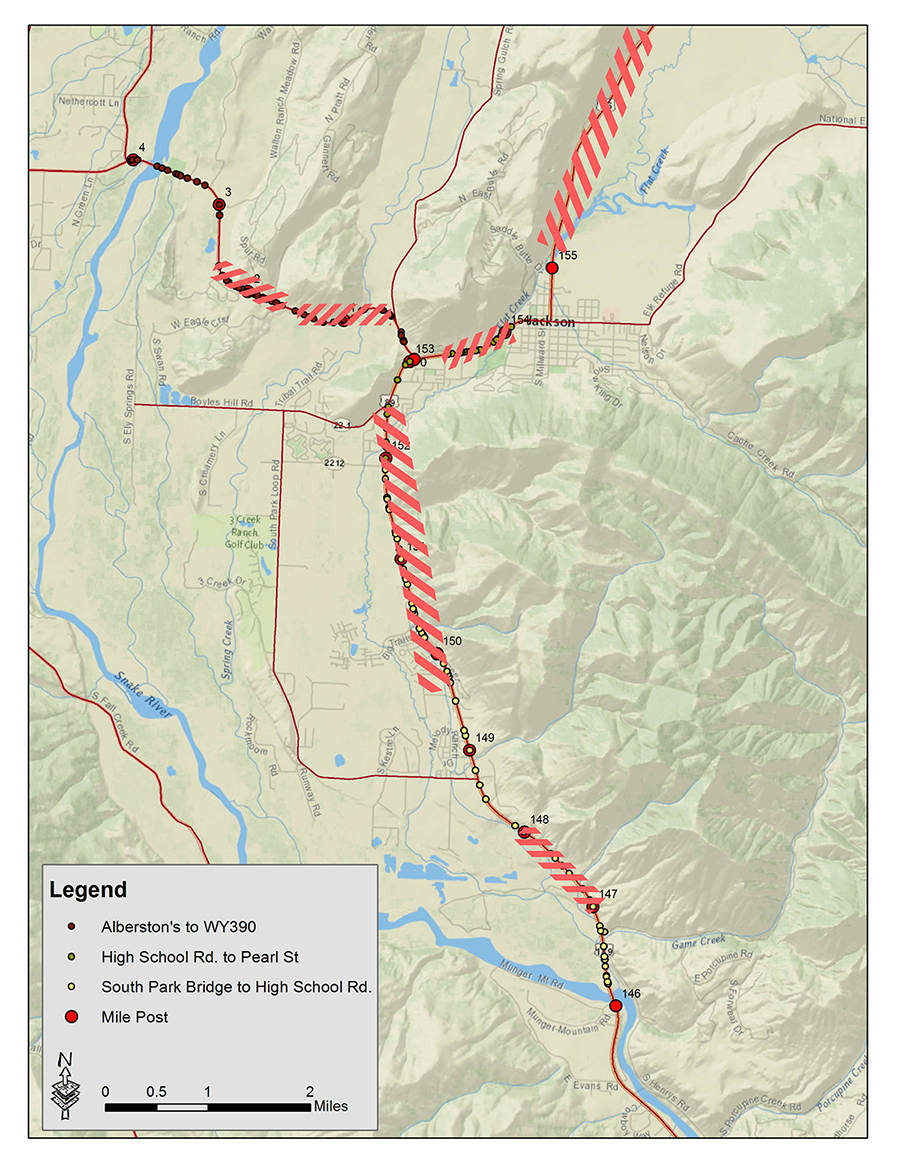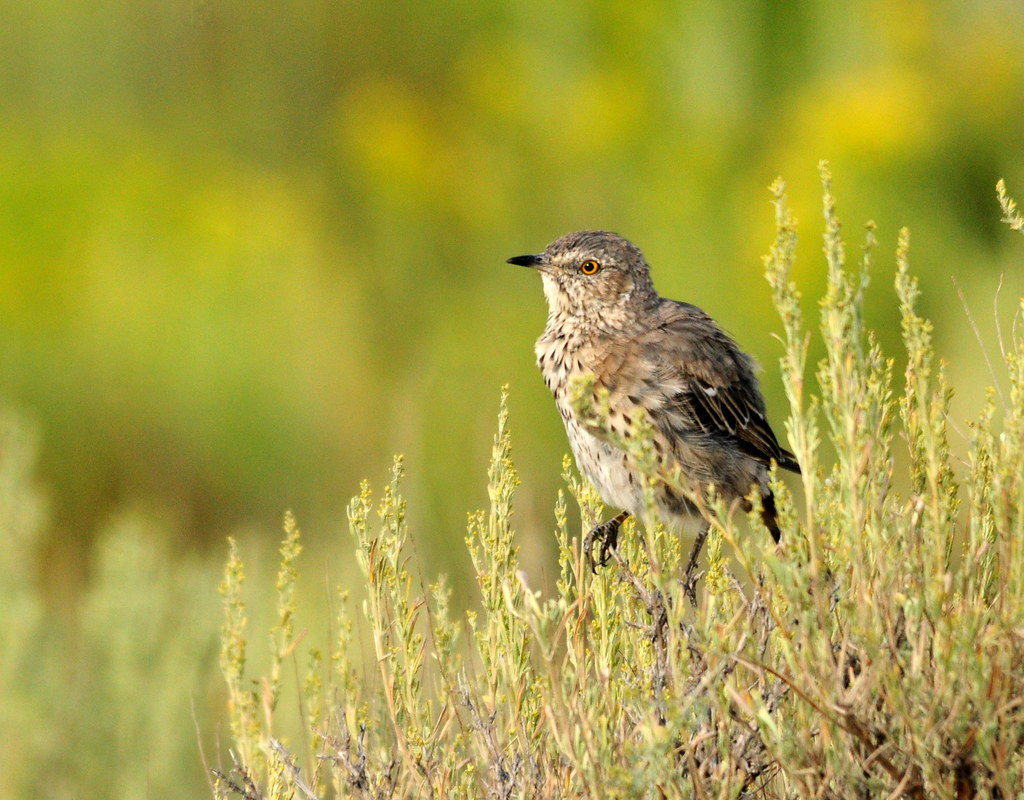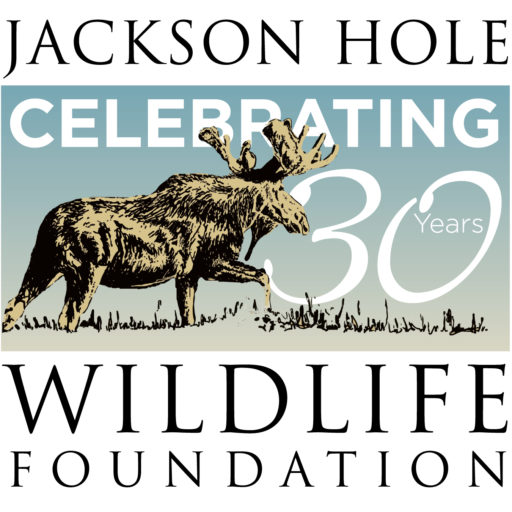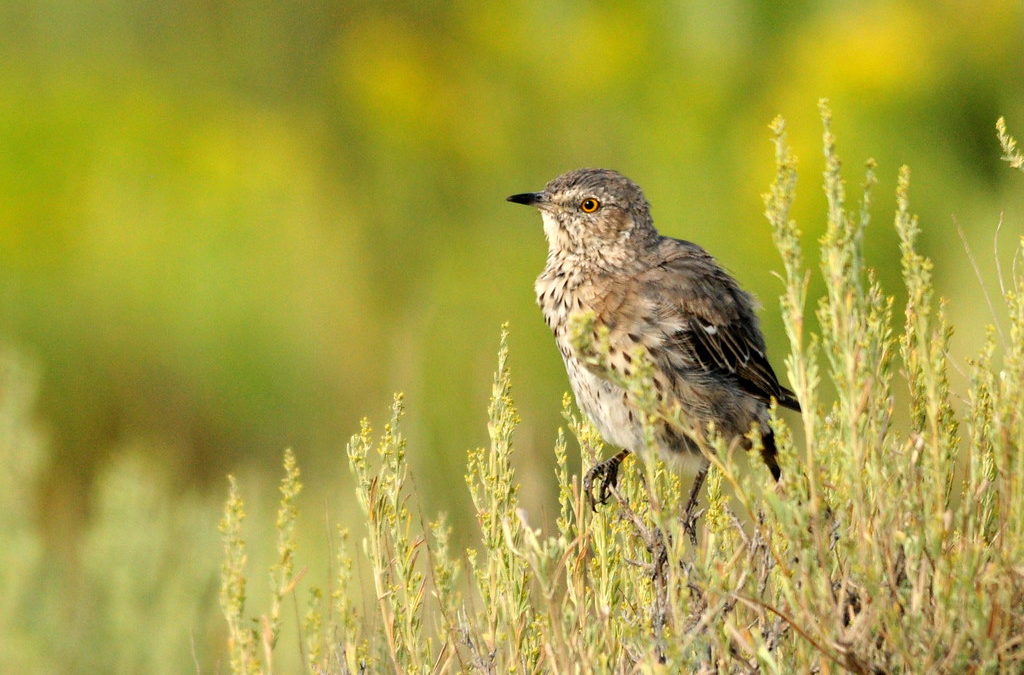
by jhwildlife | May 17, 2019 | Blog, Jackson Hole Wildlife Foundation
As the sun warms in mid-May, the aroma of sagebrush fills the valley once again. Sage-grouse leks are quieting down, bird migrants are staking out territories, and resident mammals are shifting their habitats. Nature mappers can see and hear a good number of species specialized to the sagebrush-steppe by taking a drive through the “flats” of Grand Teton National Park.
Many species depend upon the expansive sage-dominated habitat that covers much of the valley floor. Mountain Sagebrush is adapted to the well-drained glacial soils and provides shelter, food, and breeding sites. Greater Sage-grouse, Brewer’s Sparrow, and pronghorn require sagebrush and are deemed “obligates”. For others it is not essential but preferred habitat here in Jackson Hole. Savannah and Vesper Sparrows, Western Meadowlarks, Sage Thrashers, and Green-tailed Towhees build nests in the dense shrubs and search for insects and spiders for food. Red-tailed Hawks and Northern Harriers hunt for rodents, such as least chipmunks, Uinta ground squirrels, and voles. Hummingbirds zoom in to pollinate larkspurs and scarlet gilia.
The next few weeks is a great time to see and nature map wildlife. Songbirds are singing atop sagebrush to establish territories and attract mates. You may see males fly at intruders or observe courtship behaviors – bowing, feeding, and fluttering. Later on, most birds go quiet while raising chicks and so are much harder to find.
Mammals are also active. Pronghorn arrive just about now and soon will be giving birth. Coyotes will be looking for fawns hidden among the sage shrubs, although ground squirrels are much easier to catch. “Red” bison calves will be cavorting, and mule deer are moving about belching out volatiles of their favored forage: sagebrush. The smell of sagebrush leaves comes from terpenoids and coumarins, which serve as chemical defenses. Wildflowers begin blooming in abundance in June – paintbrush, hawksbeards, sulphur buckwheat, lupine, and balsamroot, adding to the splendor of the scene.
So take an early morning or evening drive through the park – around Antelope Flats, up the park road. Or better yet, find a spot to sit quietly with your binoculars and a spotting scope handy. And please, keep on nature mapping. We want to be sure our common sagebrush-steppe species stay common. Your observations help us know how these critters are faring over time.
Thank you!
Frances Clark, Nature Mapping Volunteer

Pronghorn are an iconic species of the sagebrush-steppe. Photo: Mark Gocke.

by jhwildlife | Aug 17, 2018 | Blog, Jackson Hole Wildlife Foundation, Wildlife Friendlier Landscapes
by Jon Mobeck, Executive Director
For 25 years, Jackson Hole Wildlife Foundation (JHWF) has worked to reduce human-caused impacts on wildlife. One of our most visible programs, Wildlife Friendlier Fencing, began in 1996 when a small group of local citizens and JHWF founders organized group fence pulls on Saturdays. Over the course of the next two decades, hundreds of individuals (almost entirely volunteers) helped to remove or modify almost 200 miles of fence. There have been so many key contributors that it would be unwieldy to list them all here, but we recognize two of them today for their dedicated efforts in the field, and for their legacies that inspire our work well after their lives were ended much too soon.
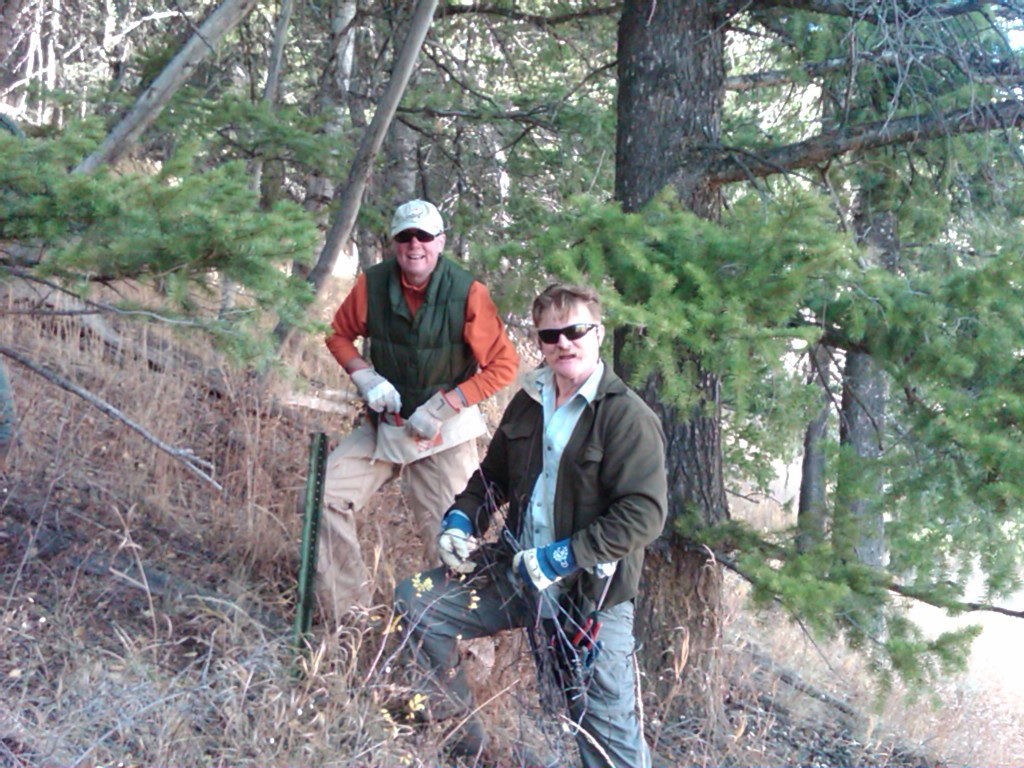
Sue Colligan (left) and Greg Griffith were invaluable contributors to the Wildlife Friendlier Fencing program for many years.
Sue Colligan was the Executive Director of the Jackson Hole Wildlife Foundation less than a decade ago, and all who remember her speak to her incredible dedication to the fence program. My personal recollection of Sue was as a member of an early incarnation of the Safe Wildlife Crossings for Jackson Hole group in 2011-2012. While I represented The Murie Center for that purpose, Sue advocated for wildlife on behalf of JHWF. At those meetings (in Vance Carruth’s living room), Sue used her voice effectively and with intelligent precision. I think she could say in 20 words what I convey in 100. Those who joined her on fence pulls have also spoken about her steady resolve to get things done for wildlife. When Sue’s illness took her life too soon, she left a legacy gift to JHWF to continue its essential work. With those funds, we have been able to purchase supplies for the Wildlife Friendlier Fencing program, and in 2018 we used funds left by Sue to purchase a work truck, which has been used extensively to support our Wildlife Friendlier Fencing program (it carries tools and gear to every project) and our Nature Mapping Jackson Hole program (it carries bird banding supplies, mist nets and gear to field sites weekly throughout the summer.)
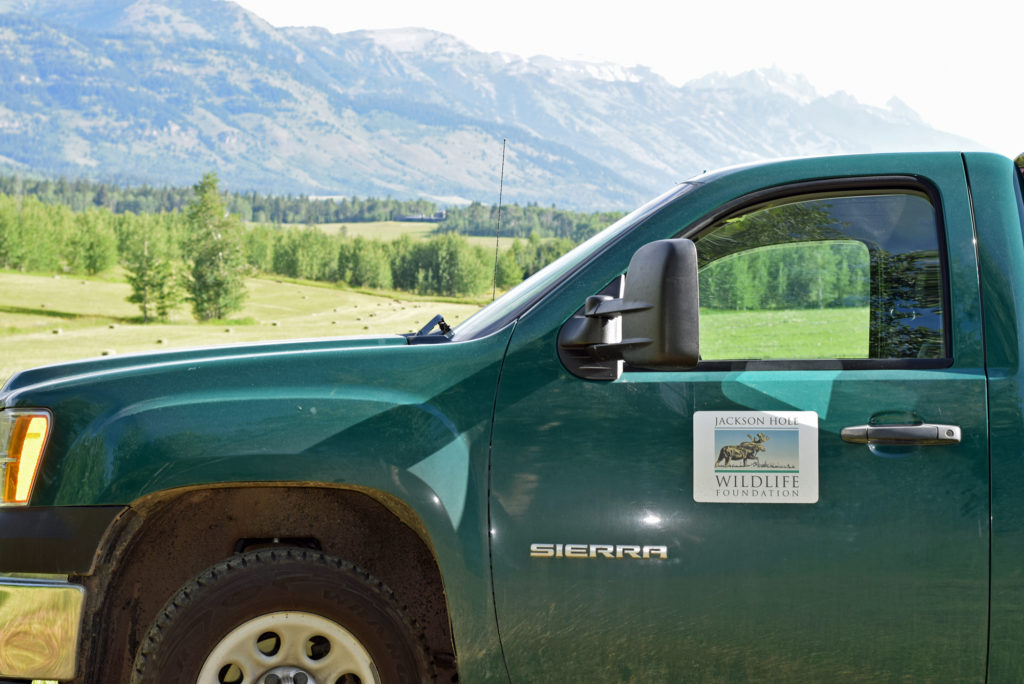
The Jackson Hole Wildlife Foundation truck sits ready for work at a Wildlife Friendlier Fencing project site in front of the Tetons.
Greg Griffith is known to many in Jackson as the unstoppable engine of the Wildlife Friendlier Fencing program for many years. A car accident took Greg from us very prematurely, but rarely a fence project goes by without someone mentioning Greg – his specific project methods, his concern for other volunteers, his fierce commitment to doing what is best for wildlife. Stories about Greg are now the stuff of legend, except there’s no indication that any of the stories are exaggerated, as many legends are. If someone says that he once carried six full rolls of barbed wire down a mountain and across a raging river, I’d have to believe it. It must have happened just that way. While I never met Greg, I feel that I know him through these stories, through the many volunteers who were deeply affected by him. When Greg passed, friends from far and wide made donations to JHWF in his honor. Now almost three years later, we still receive notes and occasional donations that reference Greg’s impact. He improved the lives of people as he made our valley better for wildlife. With the donations made in Greg’s name, JHWF purchased a cargo trailer to house all of our fencing tools and other JHWF field supplies. In the near future, we will place a graphic wrap on the trailer that promotes the program and the work of the many volunteers who have contributed to its success over the years.
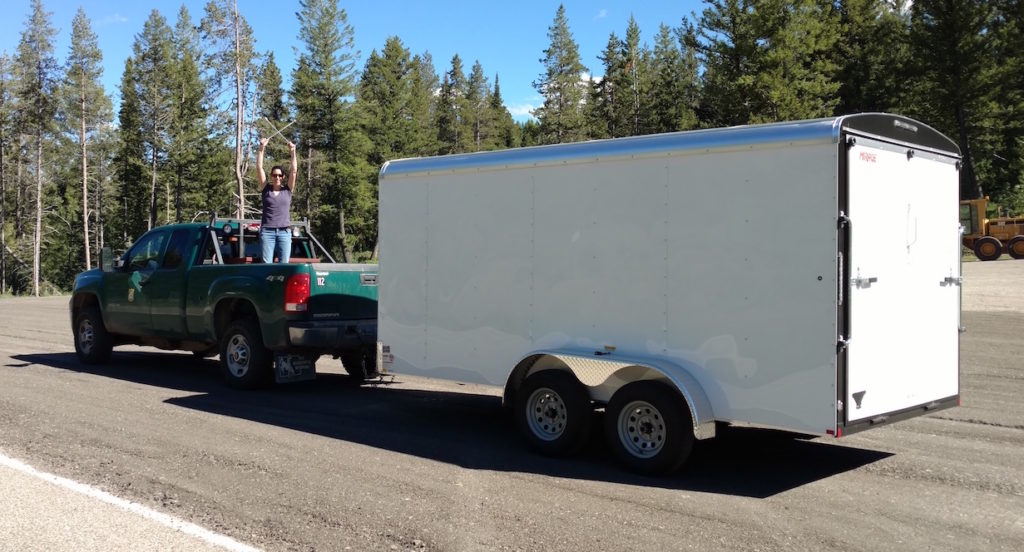
JHWF Board President Aly Courtemanch delivers the new cargo trailer to the JHWF office.
There are many people to celebrate in the history of the Jackson Hole Wildlife Foundation, likely none of whom really care to be celebrated. Many have done the work quietly and doggedly, on Saturdays, in the heat, in the rain. Whatever it has taken to get the job done. The legacy that follows all of these individuals is one of humble service to the wild community, to which we belong. May it ever be so.
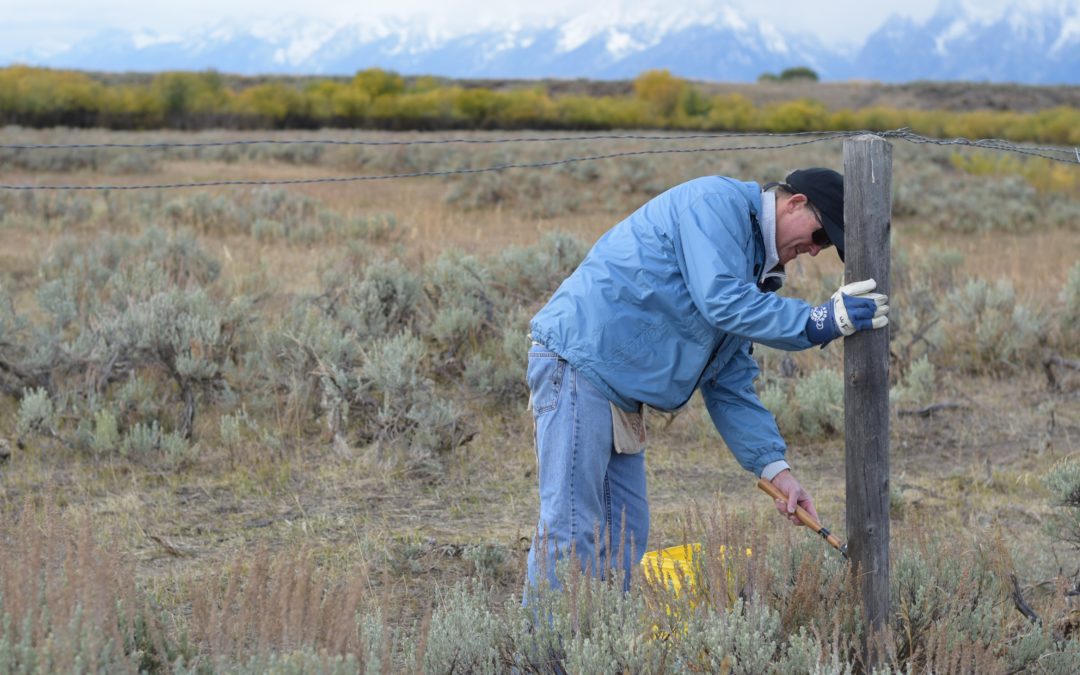
by jhwildlife | May 4, 2018 | Blog, Jackson Hole Wildlife Foundation
We are excited to welcome Bruce Pasfield to the Jackson Hole Wildlife Foundation’s (JHWF) Board of Directors executive committee as vice president and Ben Wise as a new board member.
Bruce Pasfield is an attorney who practices environmental law in Wyoming and Washington D.C. He is currently a partner in the law firm of Alston and Bird and has served on the JHWF board since October 2016. Residents of Jackson Hole since 2010, Bruce and his wife Nancy are certified Nature Mappers and frequently volunteer on fence projects. Bruce brings enthusiasm and natural curiosity about wildlife, as well as his legal skills, to his position on the executive committee. Bruce enjoys spending time with his wife and two grown children, mostly in the outdoors birding, cycling, climbing, hiking and skiing.
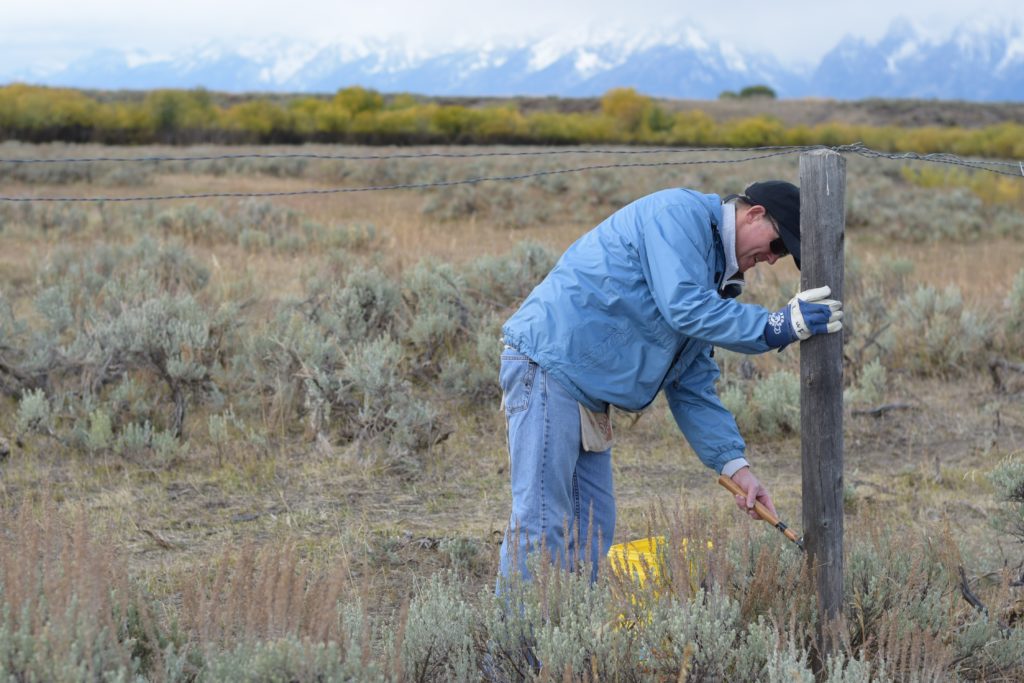
Bruce Pasfield helps on a fence project last fall on Public Lands Day.
A Worland, Wyo. native, Ben Wise has worked as the Brucellosis-Feedground-Habitat Biologist for the Wyoming Game & Fish Department in the Jackson Region since 2013. Ben is a key volunteer and strategist for the Wildlife Friendlier Fencing program. He also volunteers his time on the Scientific Advisory Committee (SAC) for Nature Mapping Jackson Hole, vetting observations and advising JHWF on scientific goals for the array of projects. In his free time, Ben enjoys traveling, hunting, fishing and exploring all that Wyoming has to offer.
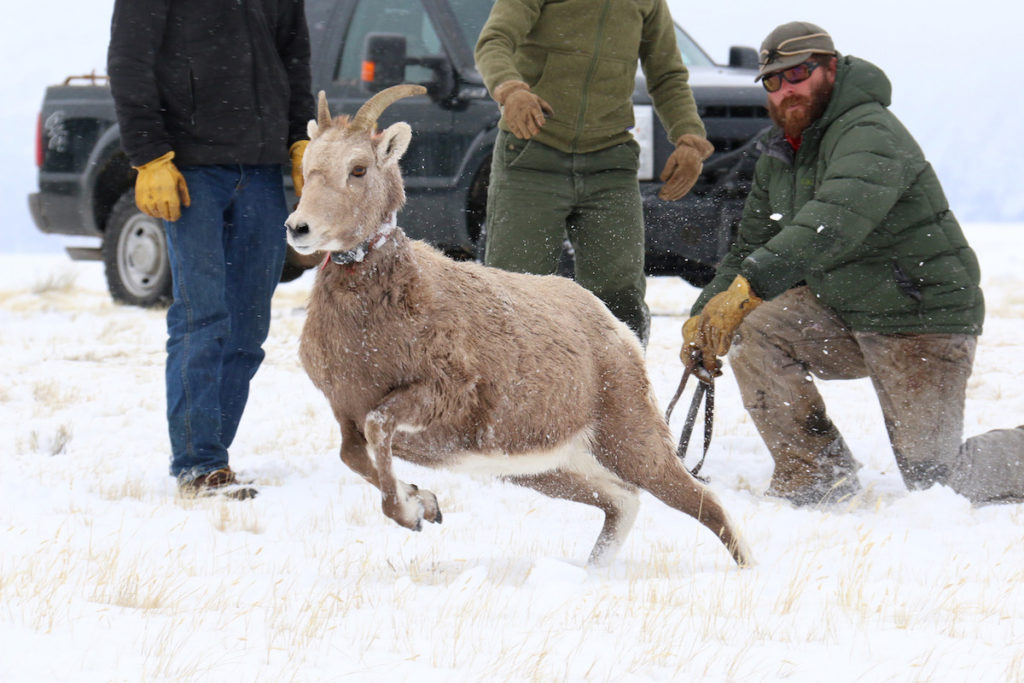
Ben Wise releases a bighorn sheep during a collaborative research project.
The JHWF Board of Directors is comprised of a diverse group of individuals with varied backgrounds including wildlife biology, wildlife management, public relations, law, conservation, planning and development, private business and local government.
The board represents a good cross-section of the community and enables us to have thoughtful debate about current issues and seize opportunities to advance meaningful on-the-ground work. Many board members contribute extensively as volunteers to increase our impact in our core program areas, extending a hands-on legacy that dates back to the origin of the organization in 1993.
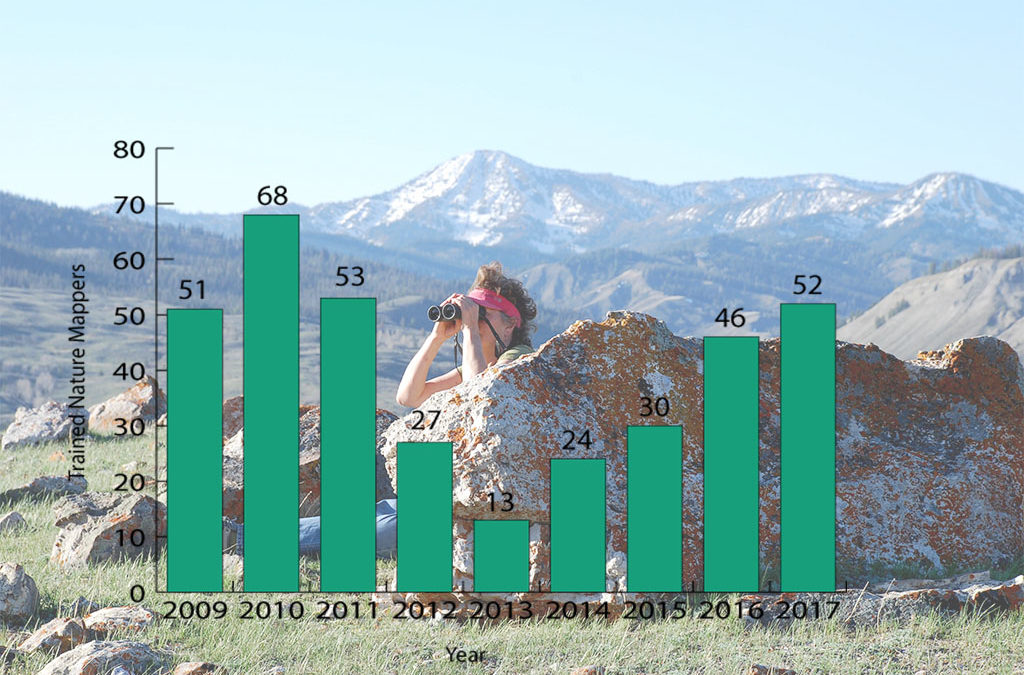
by jhwildlife | Dec 23, 2017 | Blog, Jackson Hole Wildlife Foundation, Nature Mapping Jackson Hole
Nine Years of Data: What are We Starting to Learn?
Over the past nine years, 464 people have been trained as certified Nature Mappers and have entered 47,829 observations into the Nature Mapping Jackson Hole program’s central database.
All this effort is filling wildlife observation and distribution needs not already covered by state and federal agencies or local research organizations. Furthermore, together we are fostering a community that looks deeper into the meanings of science and citizenship – therefore, realizing that to participate in the building of knowledge about how our world works, can have profound implications for the way we, Jackson Hole, relate to our natural environment and shape its future.
Thank you for getting involved in the experiences of seeing, feeling, and understanding nature in all its amazingness through Nature Mapping Jackson Hole.
Below is a current snapshot of our database (Note: numbers reflect entries made in the database as of December 7, 2017). In the coming year, JHWF will take a deeper look into the database to better understand data related to volunteer participation and to identify potential increases or declines in any species over time. Stay tuned, there is more to come!
2017 Observations by Project:
- Project Backyard – 2,611
- Casual Observations – 3,244
- Moose Day – 166
2017 Observations by Species:
- Reptiles and Amphibians – 71
- Birds – 3,806
- Mammals – 2,126

Figure 1. Total number of active Nature Mappers by year (2009-2017)
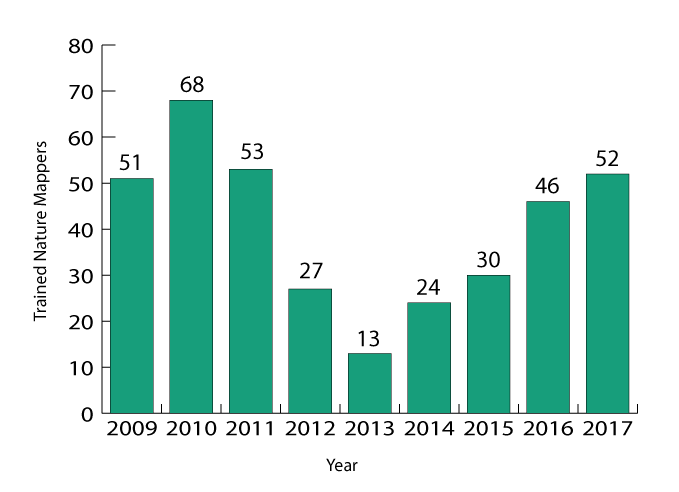
Figure 2. Number of newly trained Nature Mappers by year (2009-2017)
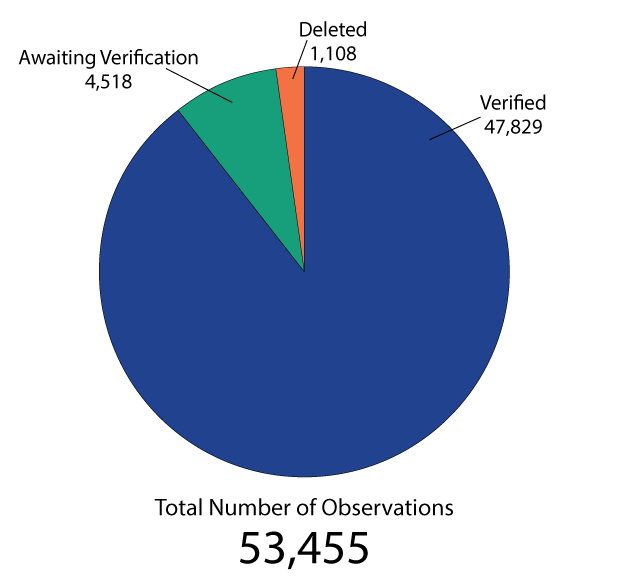
Figure 3. Total number of observations by status in the Nature Mapping Database
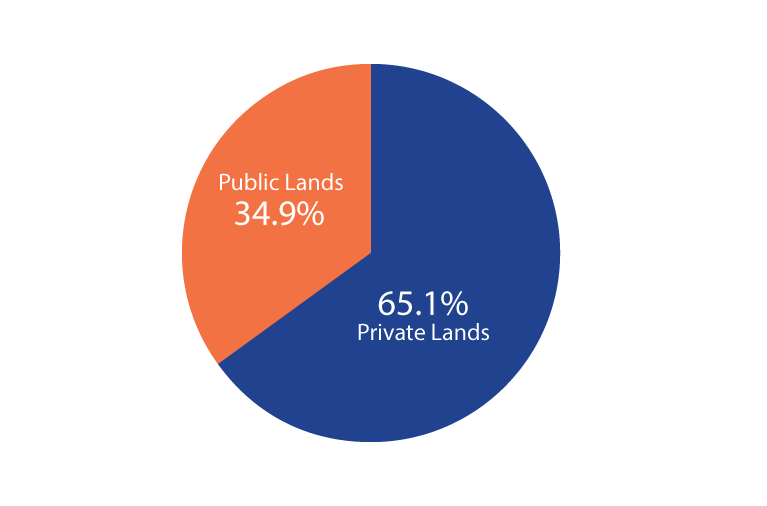
Figure 4. Percentage of Nature Mapping observations that are located on public vs. private lands (verified observations; 2009-2017)

Figure 5. Total number of species entered by Nature Mappers (includes verified, unverified and deleted observations; 2009-2017)
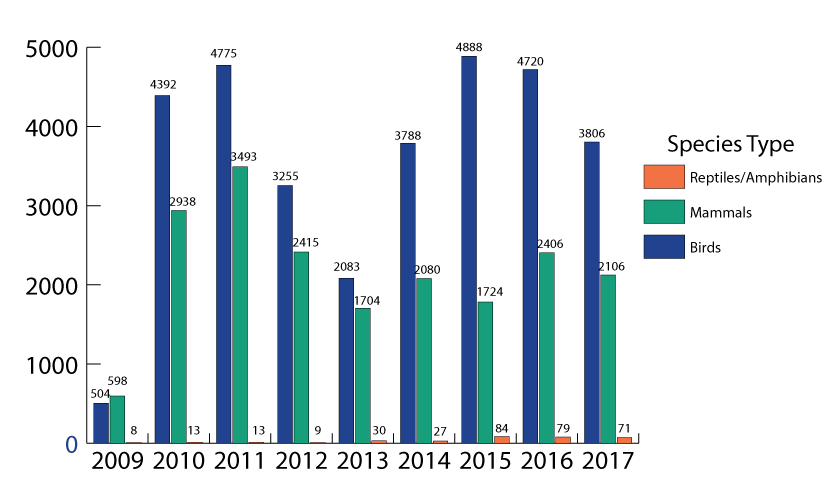
Figure 6. Total number of species by type entered by Nature Mappers (includes verified, unverified and deleted observations; 2009-2017)
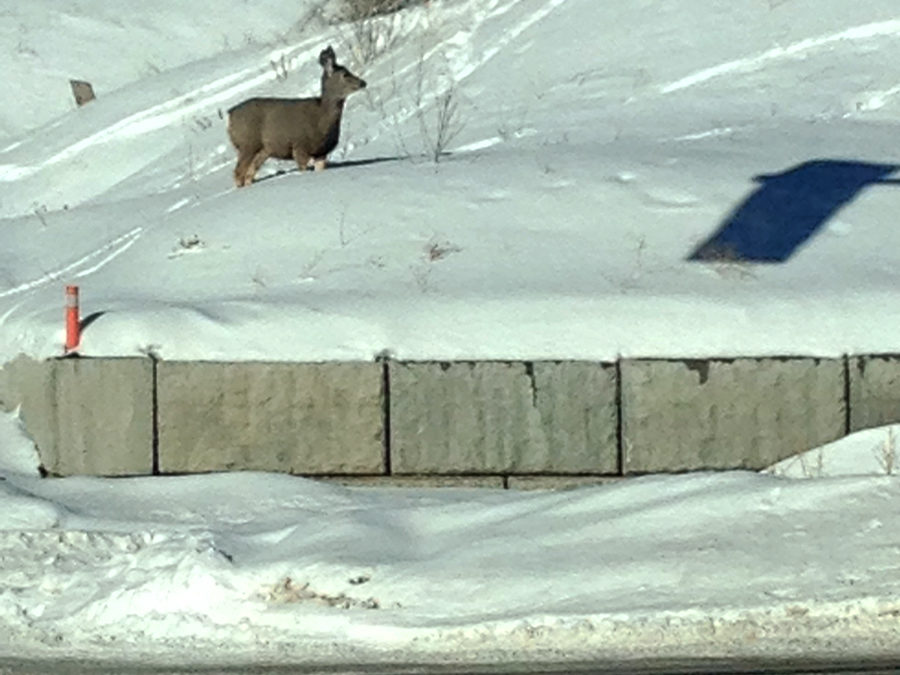
by jhwildlife | Apr 19, 2017 | Blog, Jackson Hole Wildlife Foundation, Uncategorized
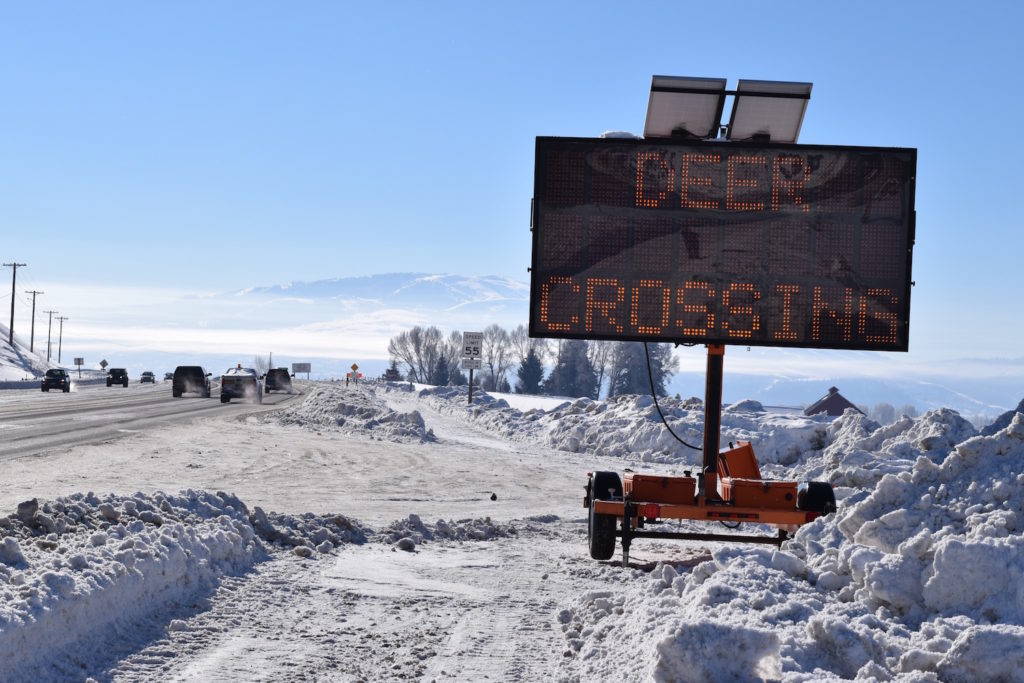
Dear friends of wildlife,
You can help the Wyoming Game & Fish Department (WGFD) and wildlife conservation groups better understand winter mortality of deer by participating in a half-day citizen survey on Saturday, April 29 from 8:30 a.m. – noon. WGFD will lead a carcass survey, along with representatives from Greater Yellowstone Coalition, Jackson Hole Wildlife Foundation, and the Jackson Hole Conservation Alliance, which will include the South Highway 89 corridor from Hoback Junction to the Jackson town limit.
We all know that this past winter has been a bad one for our wildlife. The data we collect will contribute to WGFD and conservation groups management of these wildlife herds. No experience in carcass surveying is needed! Agency professionals from WGFD will show you what to look for and how to conduct routine but important assessments.
We’ll meet at 8:30 a.m. at the Hoback Junction carpool lot near Hoback Market, discuss the day’s plan, the science underlying the survey, and volunteer roles while enjoying donuts and coffee. We’ll do our survey and return around noon. Some folks may gather for lunch thereafter.
Learn about and participate in wildlife science!
Volunteers are encouraged to take part in carcass assessments by extracting teeth and assessing bones with guidance from wildlife professionals. Please bring a stout knife and/or a saw if you’d like to participate in this aspect of the survey.
We will provide: Safety vests, data sheets, rubber gloves for handling carcasses (optional), packets for tooth samples, donuts and coffee, fun!
Volunteer notes
Please dress warm, appropriate for the conditions with boots, layers, sunscreen, etc. and bring a water bottle any other personal essentials in a small backpack.
Each volunteer is free to contribute for as long as they like, covering as much ground as is comfortable. We will break into teams assigned to various sections of different sizes to accommodate everyone. Volunteers will survey land within the highway’s right of way – generally well marked by a fence, but we’ll provide instruction on minimizing any safety risks.
Carpooling is encouraged, so if you do not have transportation or would prefer not to drive, we would still love to have you join us!
If you’d like to join us in this scientific survey, please email Jon Mobeck at jon@jhwildlife.org by Tuesday, April 25 so we can assign territories prior to the survey day.
We look forward to seeing you on April 29!
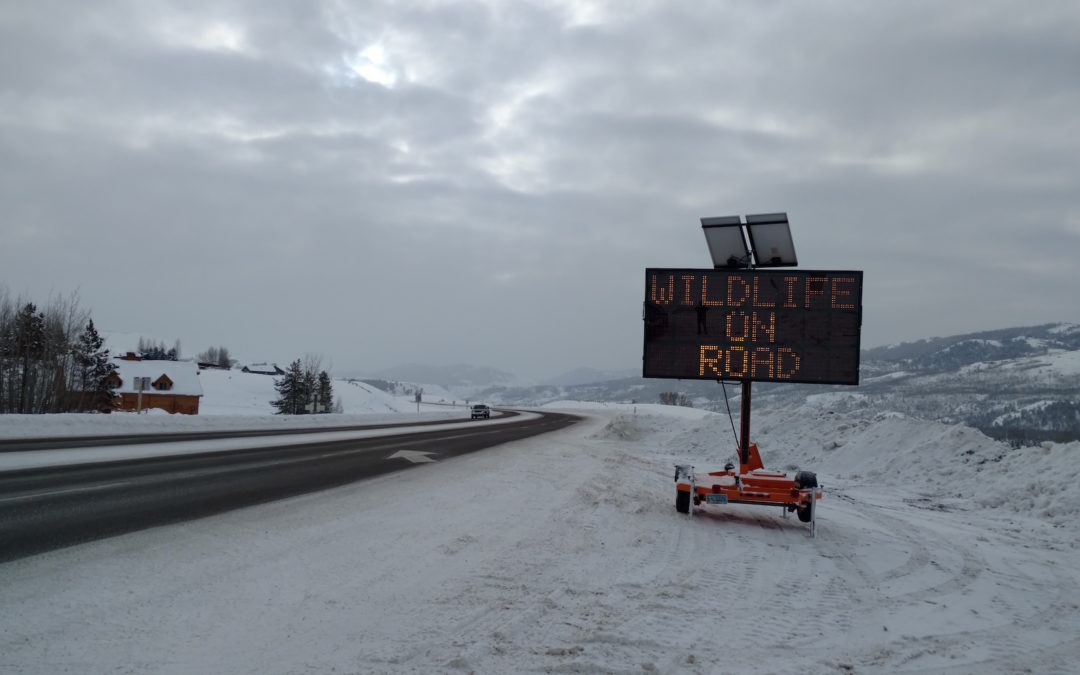
by jhwildlife | Jan 27, 2017 | Blog, Give Wildlife a Brake, Jackson Hole Wildlife Foundation
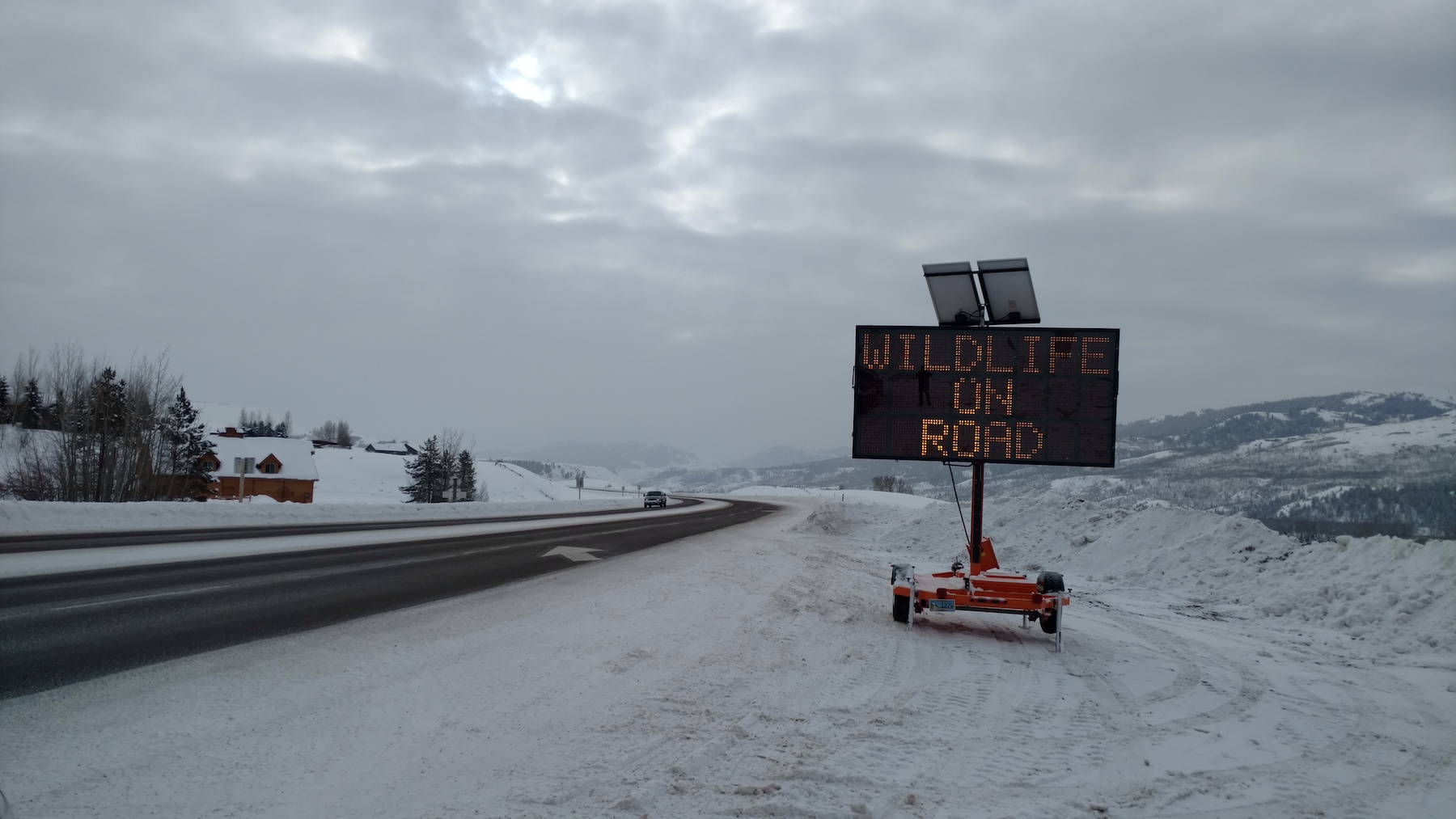
The Teton County Sheriff’s Office contributed two more variable message signs to a stretch of S HWY 89 as area organizations enacted emergency options to address a challenging winter for wildlife.
We have all seen that this year’s snowpack is making things difficult on wildlife. Mule deer in particular are spending more time in the town and on the roads – wherever they can find easier movement and potential forage. As they join us on the valley floor and move around where we do, the potential for conflict of many kinds increases. An obvious problem arises on our roadways, as high snowbanks both limit driver visibility and make navigation challenging for wildlife. Area organizations and agencies continue to discuss options to address the issue, some having been put in place immediately as short -and long-term strategies to reduce wildlife vehicle collisions are integrated. Here’s an update on the quick-response efforts:
Jackson Hole News & Guide article by Mike Koshmrl (Thursday, January 26)
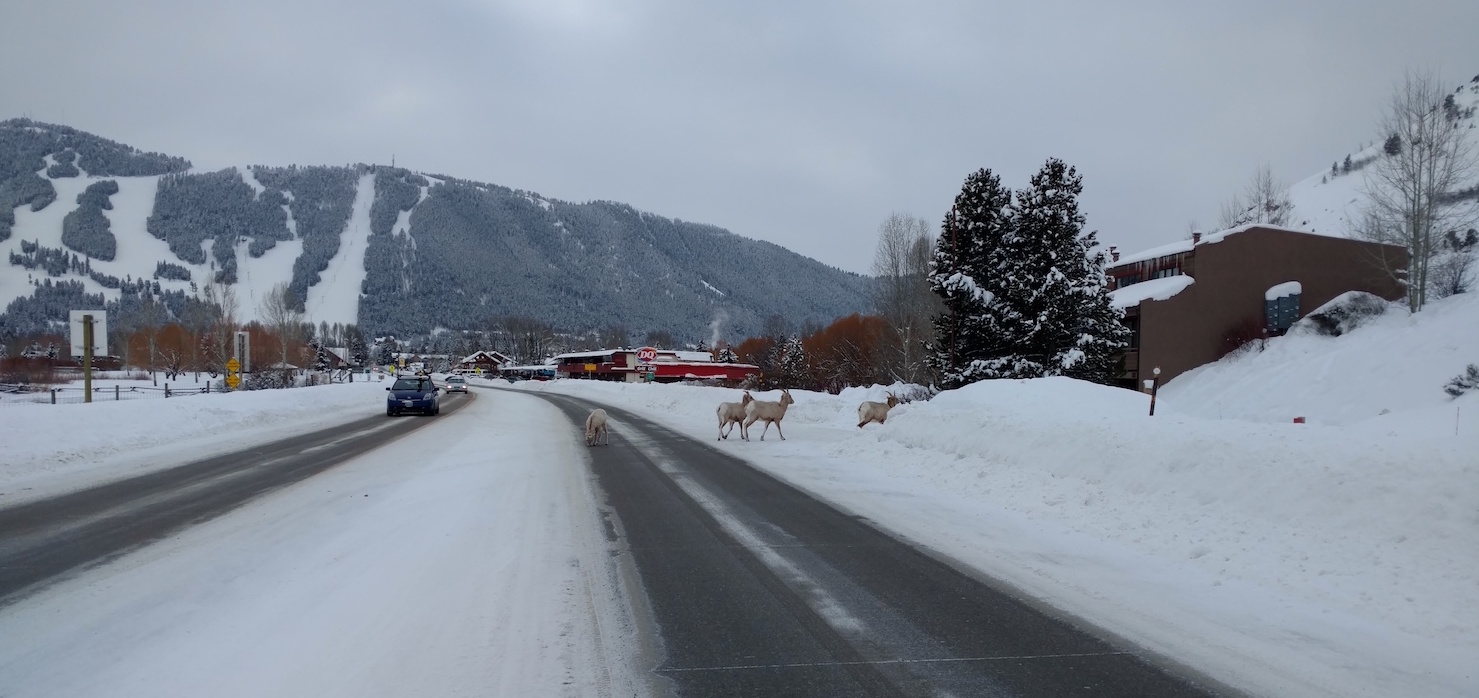
A small herd of bighorn sheep is frequenting the stretch of N HWY 89 just north of the Dairy Queen near the town limits. Please give them ample space and time to move. Unlike deer and elk, these sheep will obstinately remain on the road.
While a county-wide master plan is in process, an array of short-term mitigation measures have been and will continue to be considered. We are grateful that a good deal of data exists on the relative effectiveness of various measures, which we use to make decisions while also recognizing the constraints of time, resources and feasibility. The planned crossings on South HWY 89 (construction set to begin next spring) will separate animals from the roadway, which data suggests is the most effective way to reduce wildlife-vehicle collisions at scale. According to most research, underpasses and overpasses are 80-90% effective at reducing WVCs, while seasonal wildlife alert signage (i.e. variable mobile message signs) is estimated in the 20-25% effective range, making it an effective emergency measure and complimentary piece within a holistic WVC reduction effort. The master plan will likely include a number of mitigation recommendations to include structures, signs and speed limit adjustments to apply the most effective site-specific solutions across the valley.
What can you do now?
- Be alert and drive for the conditions. Most accidents happen at times of low visibility – dawn, dusk, nighttime or in bad weather.
- Watch for electronic warning signs. These signs are put in places where we know animals are or have recently been crossing the road frequently. They’re not just generic warnings – when you see these signs, watch carefully for wildlife.
- When you see wildlife near roadways – slow down immediately. If you see one animal cross the road, it is very likely more are close behind. Animals near the road are not waiting for us to pass by – expect them to do something unexpected, like dash in front of your car.
- In winter, wildlife often use roads to move about – it’s easier than walking through deep snow. But, sometimes they get onto a road and can’t find a quick place to get off. Give them a brake. Be patient and give them time to find a place to get off the road.
- To protect yourself and your passengers, experts advise that you should not swerve off the road to avoid hitting an animal.
- Familiarize yourself with the wildlife-vehicle collision hotspots (located here) and be even more mindful when driving there. Hint: The flashing fixed radar speed limit signs and digital message boards are located in some of these hotspots.
- Get involved with Safe Wildlife Crossings for Jackson Hole to learn about what we can do to reduce wildlife-vehicle collisions as a community.
- Contact your elected officials to let them know that reducing wildlife-vehicle collisions is a high priority.
- If you see areas where snowbanks are trapping wildlife on roadways or impeding movement unusually, please don’t hesitate to call us at 307-739-0968. We work with local partners to address these issues if possible.
Additionally, if you are a Nature Mapper, record your observations of wildlife around neighborhoods and roadways. Please use the comments fields to share the activity you observe. The more information we collect about locations and behaviors during winter (all seasons, actually), the better we understand as a community how we are interacting with wildlife, with the goal of living compatibly alongside our wild neighbors.
Be especially alert in the areas highlighted on this map!
